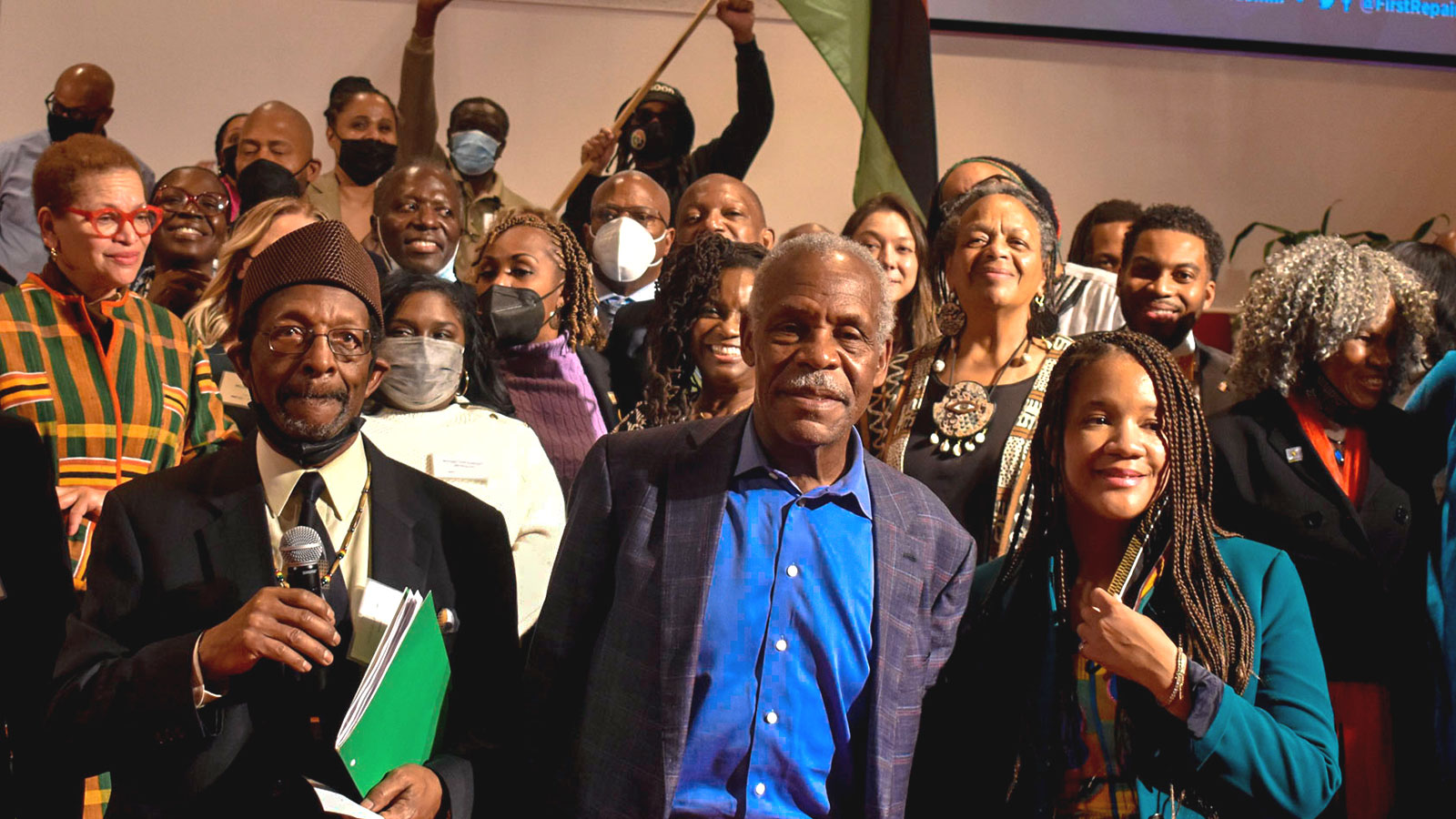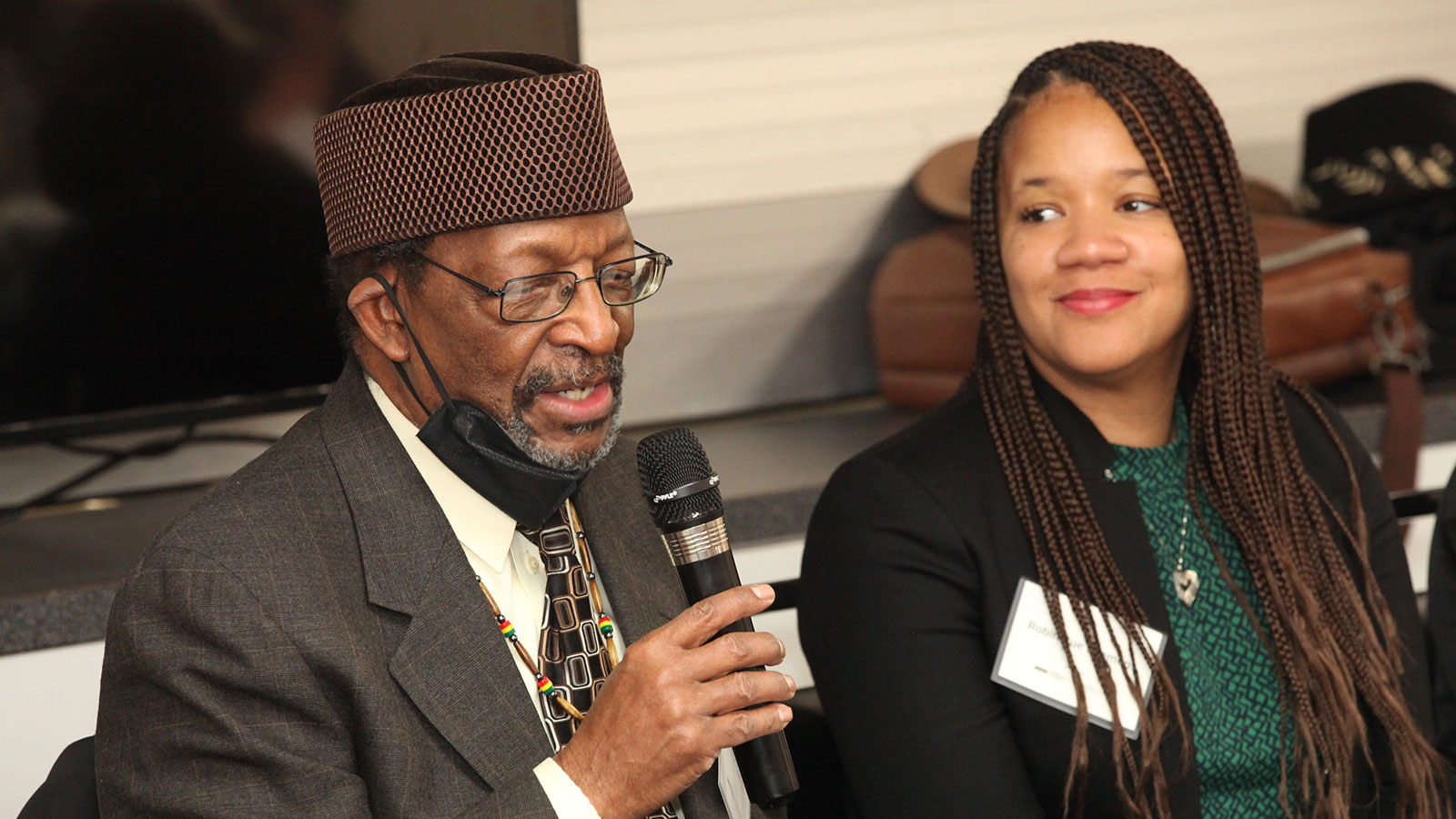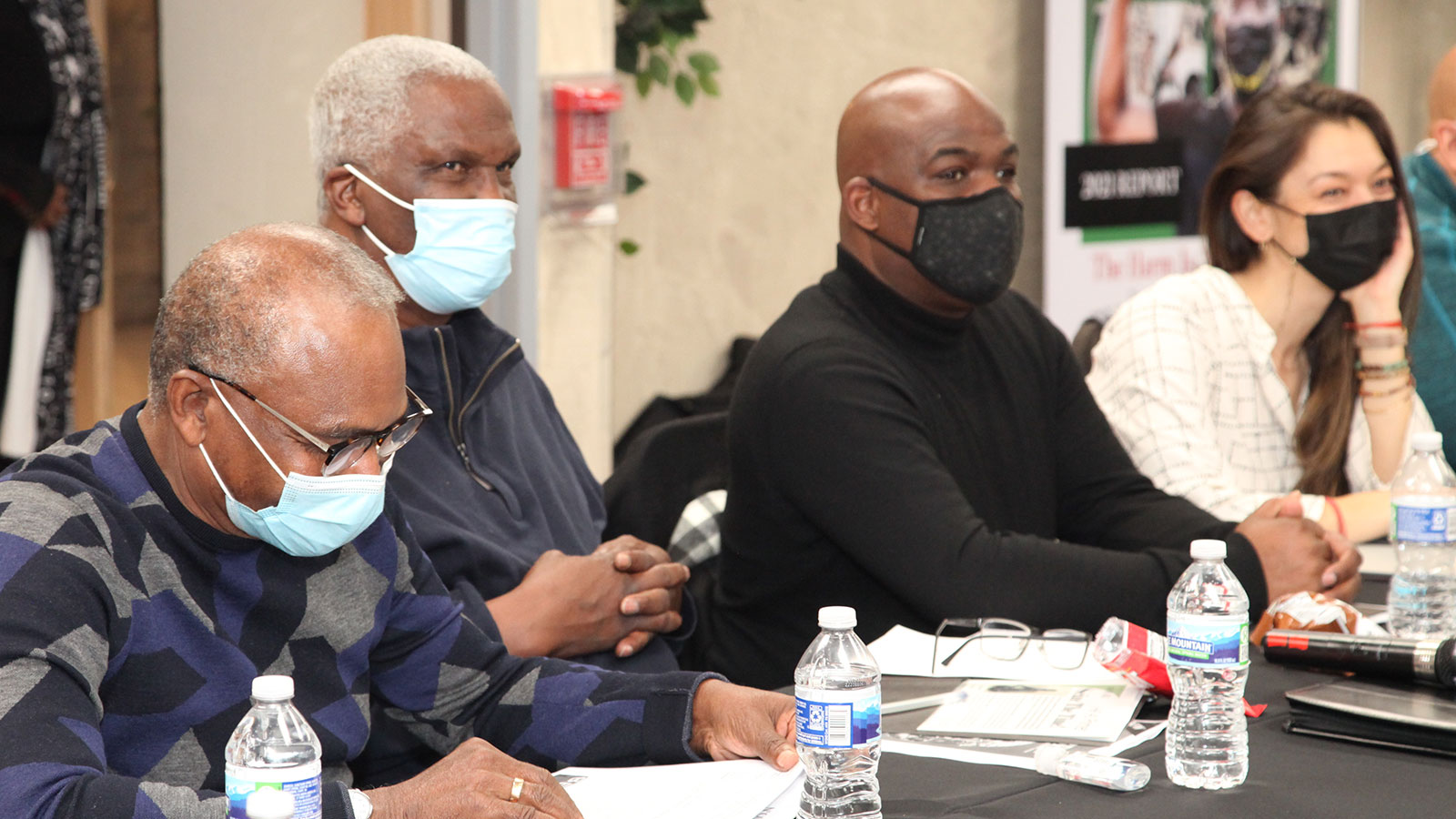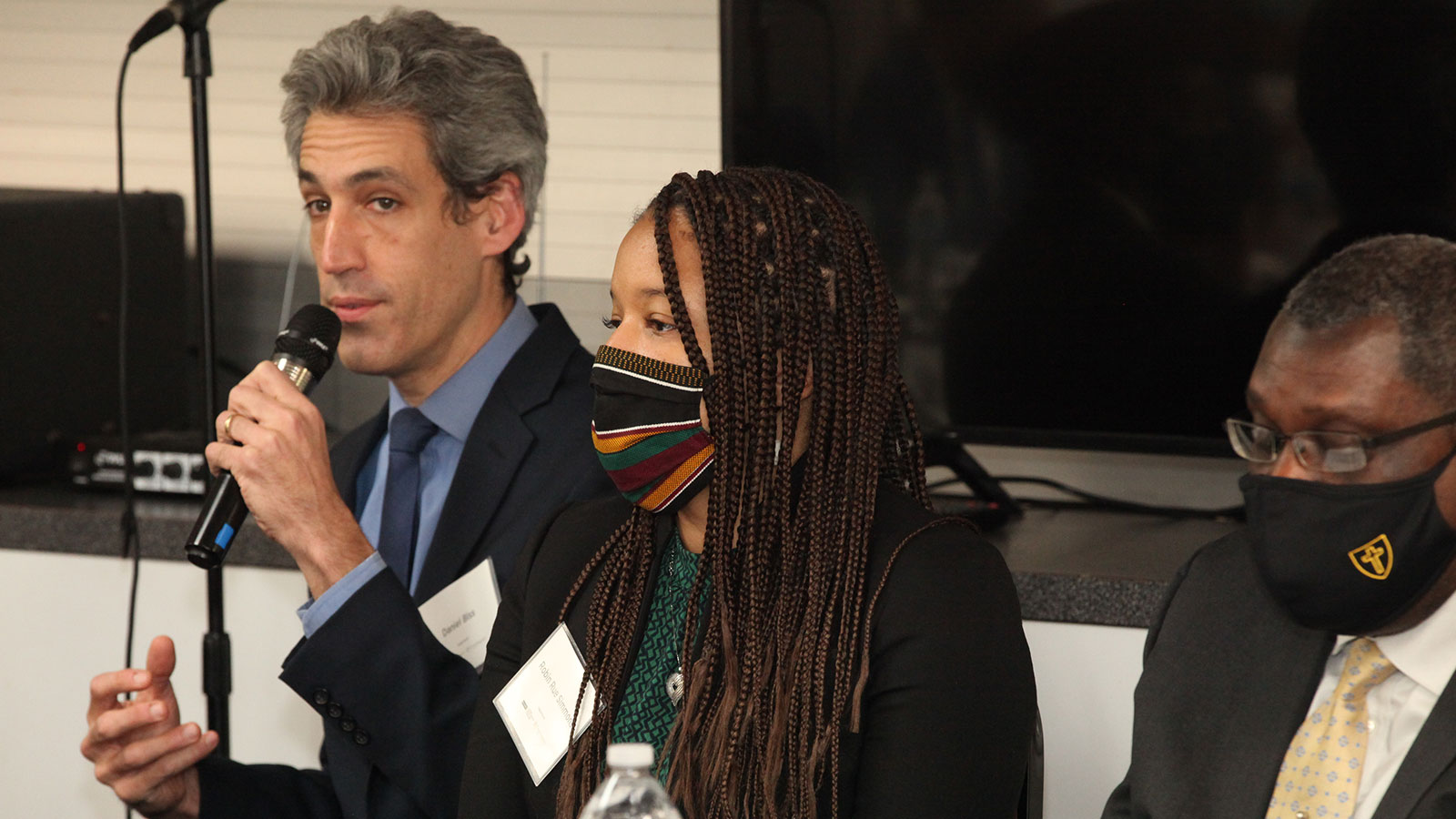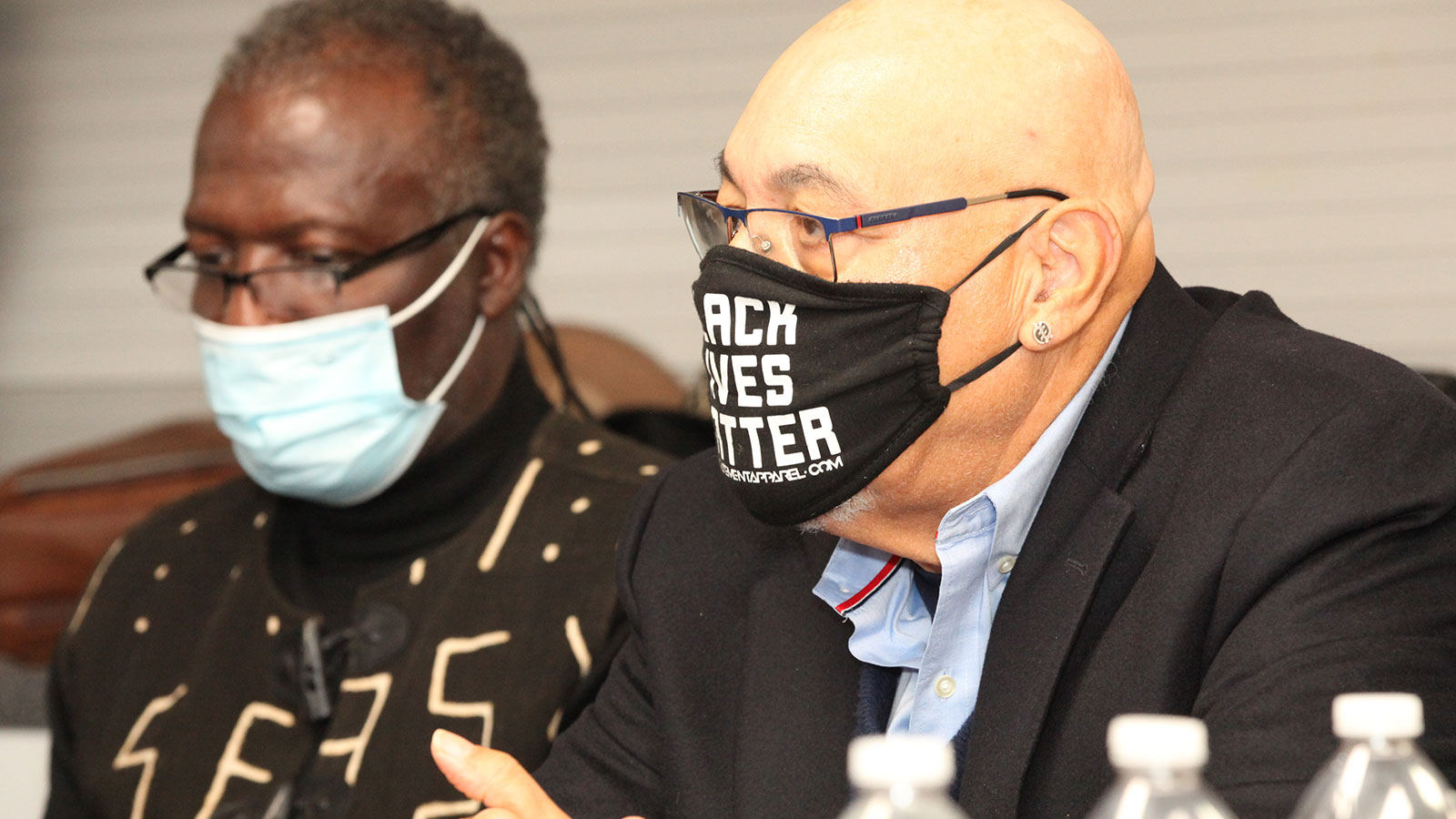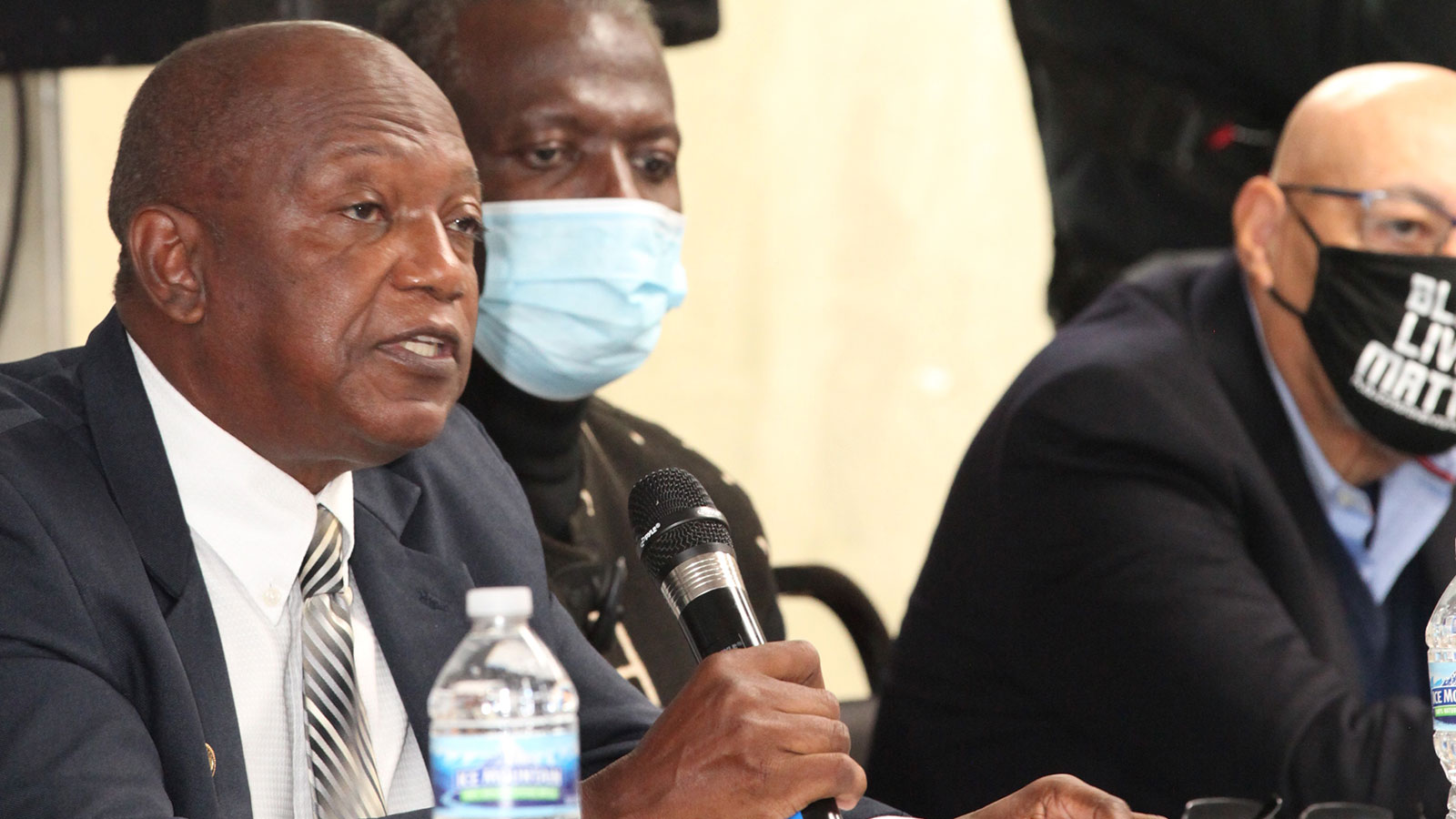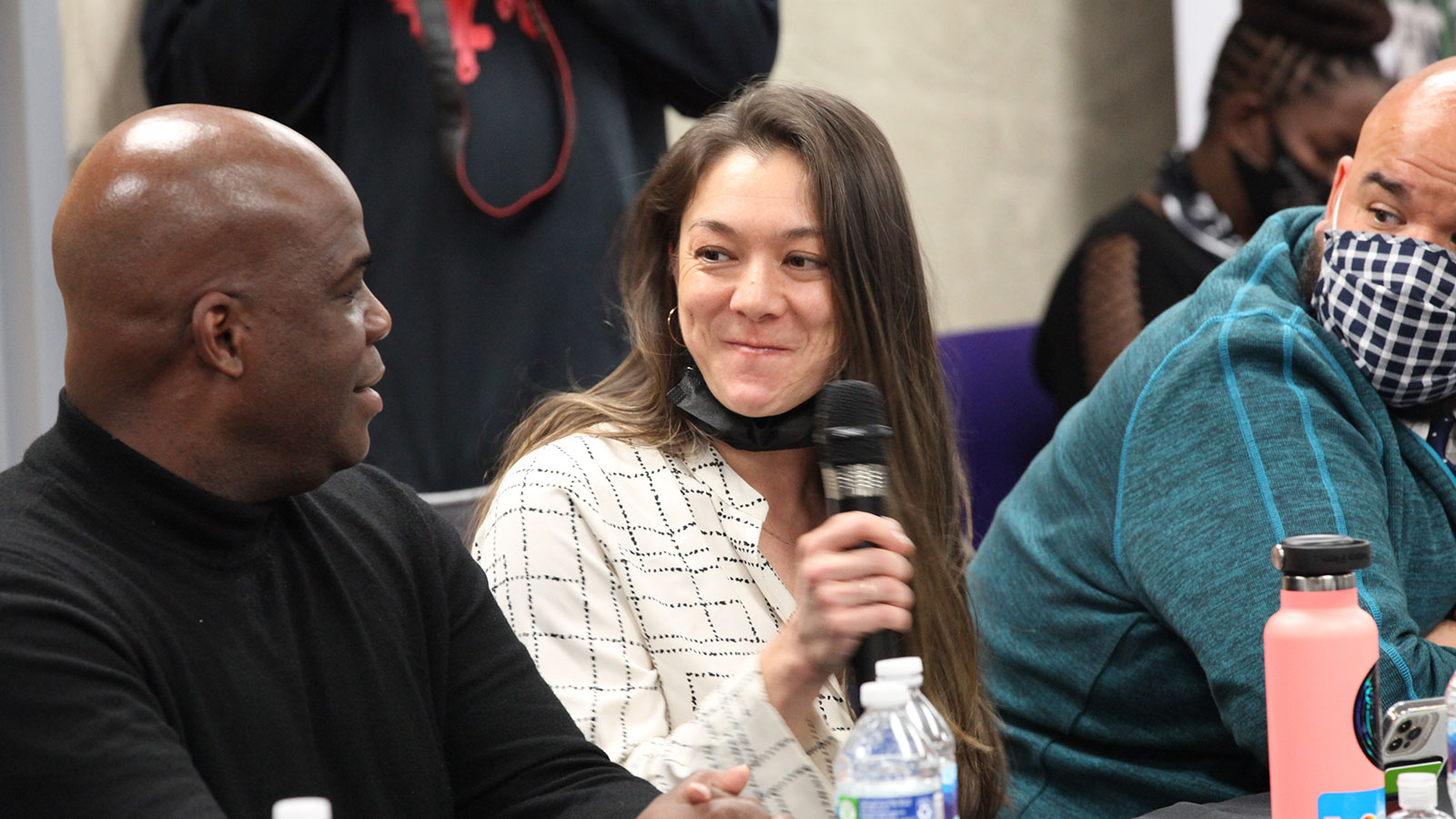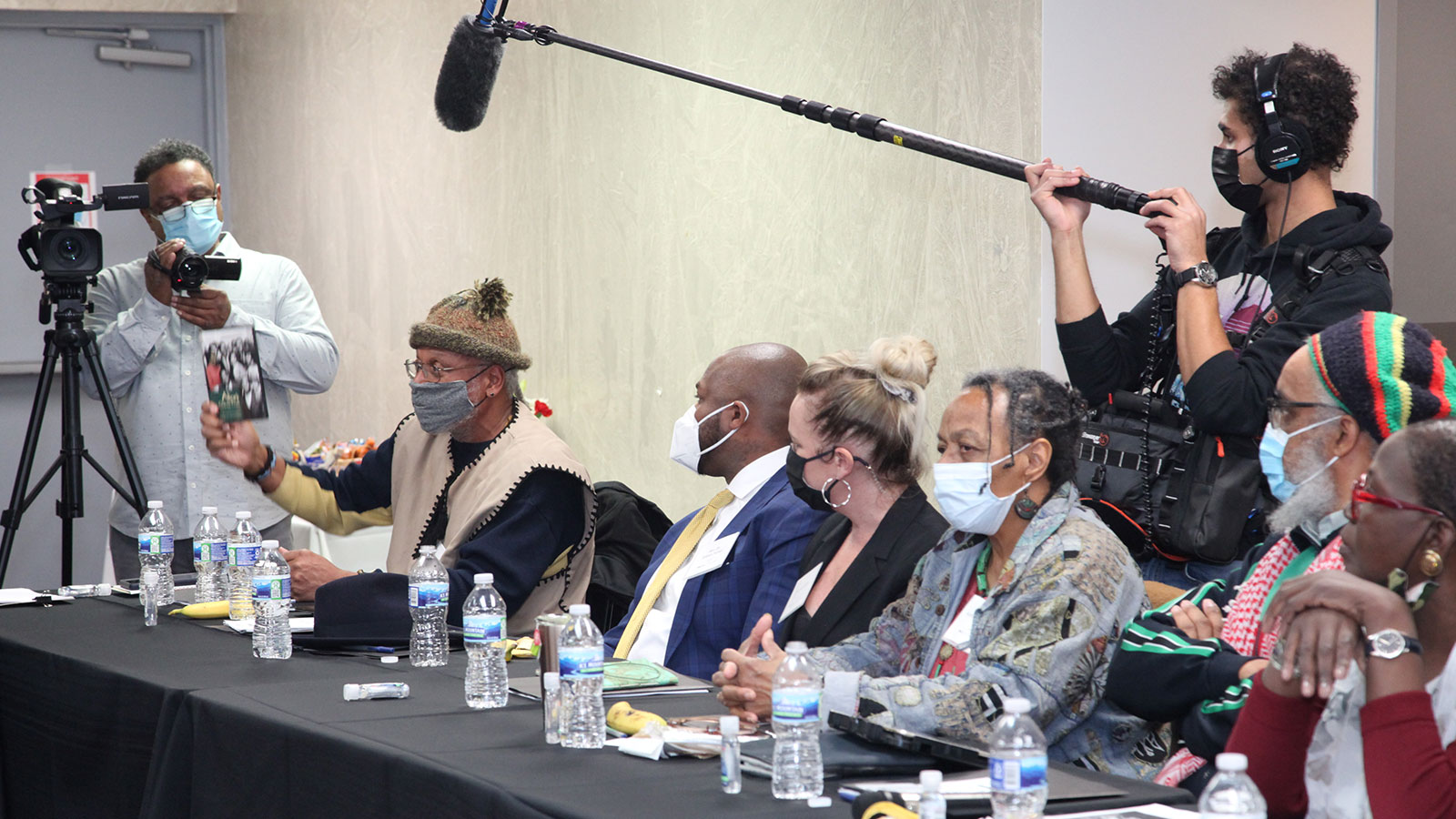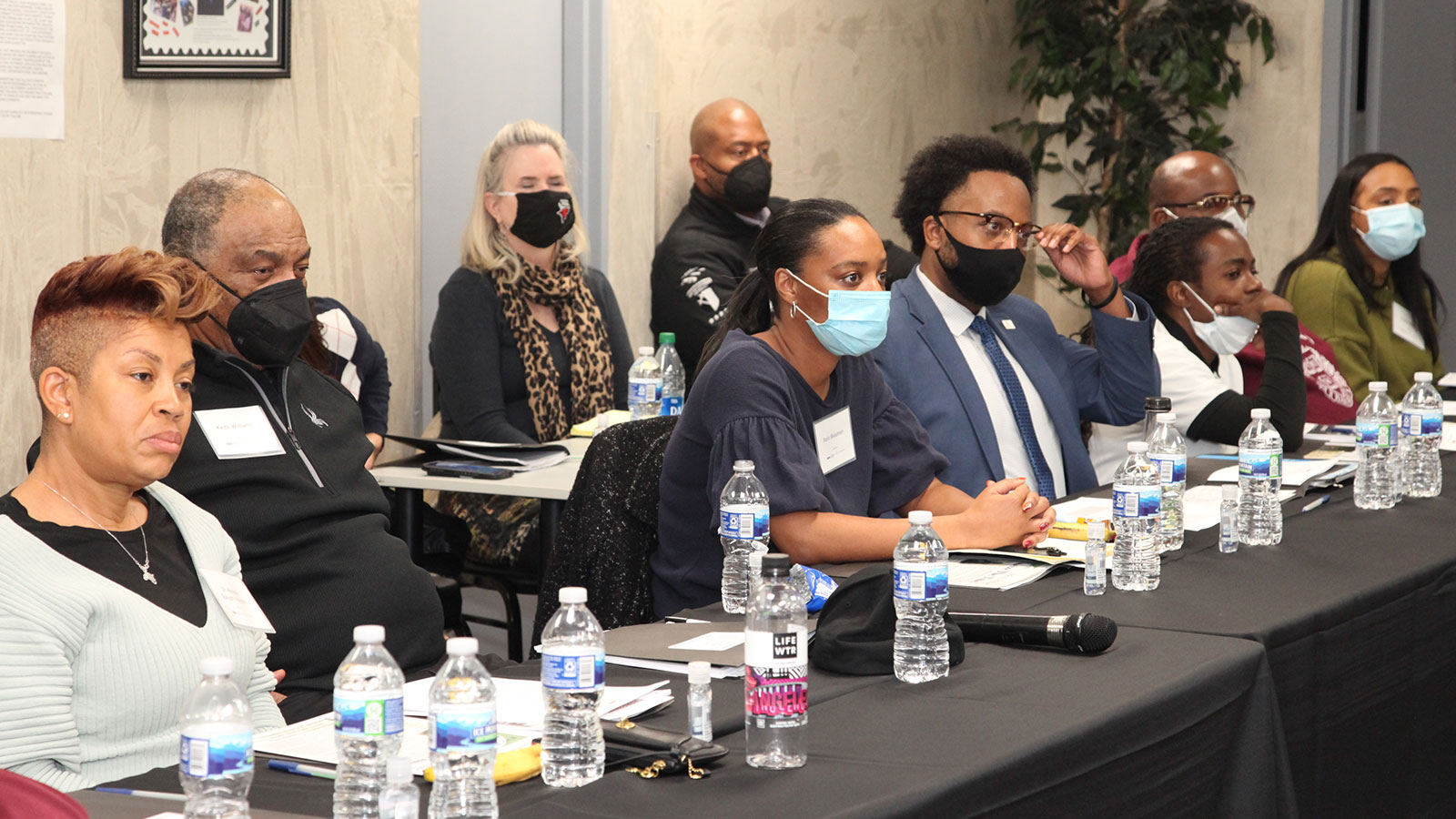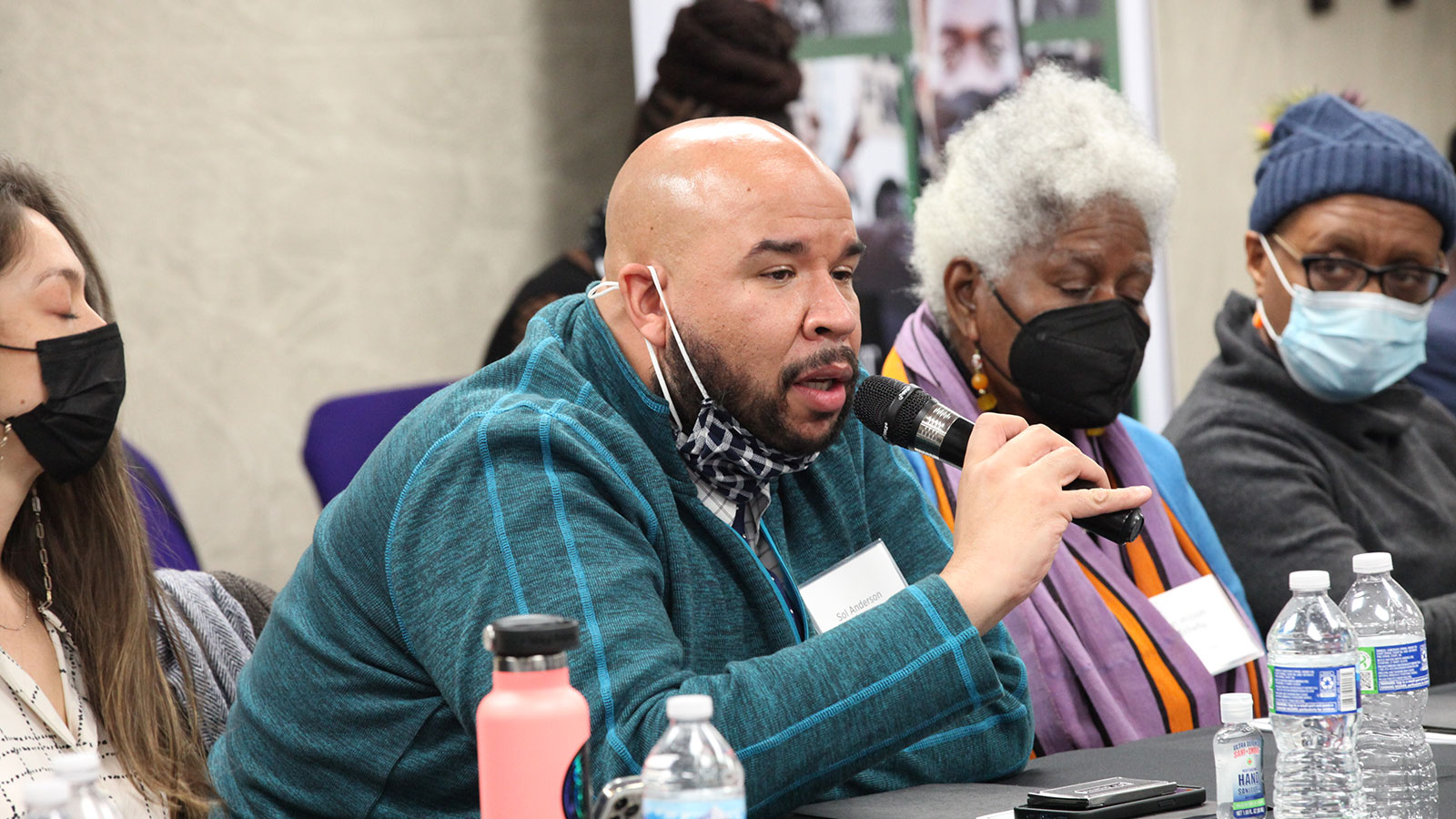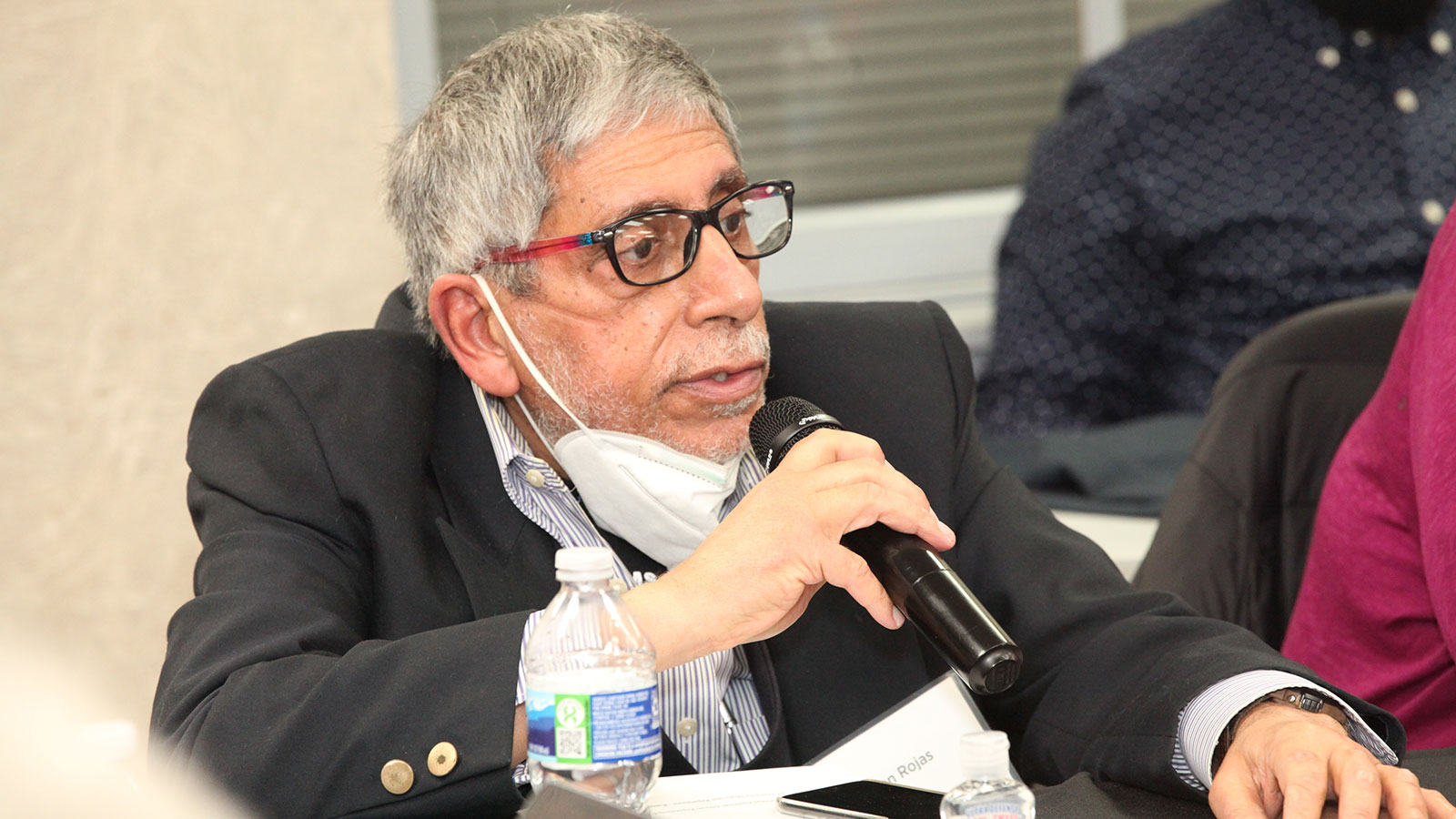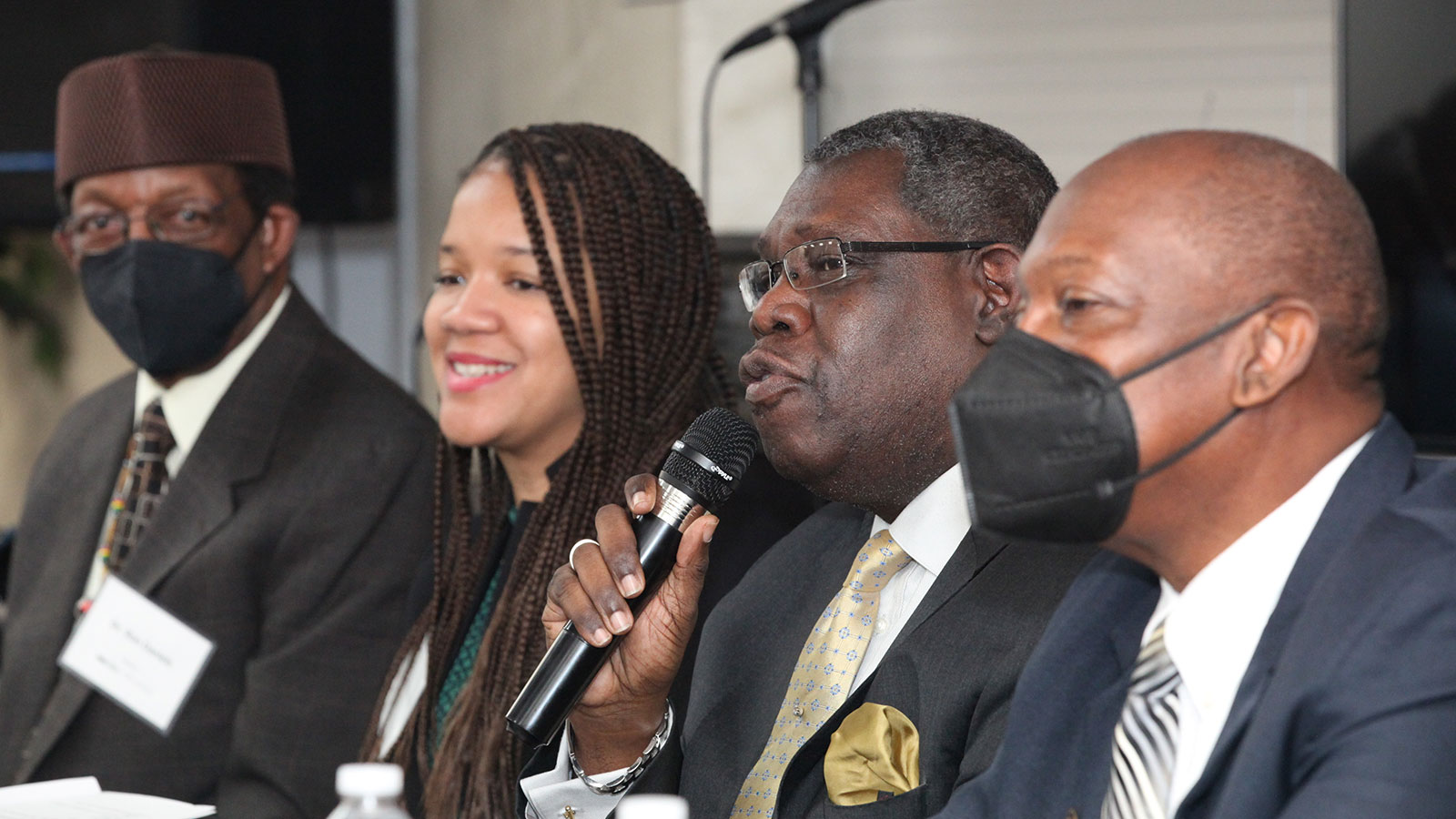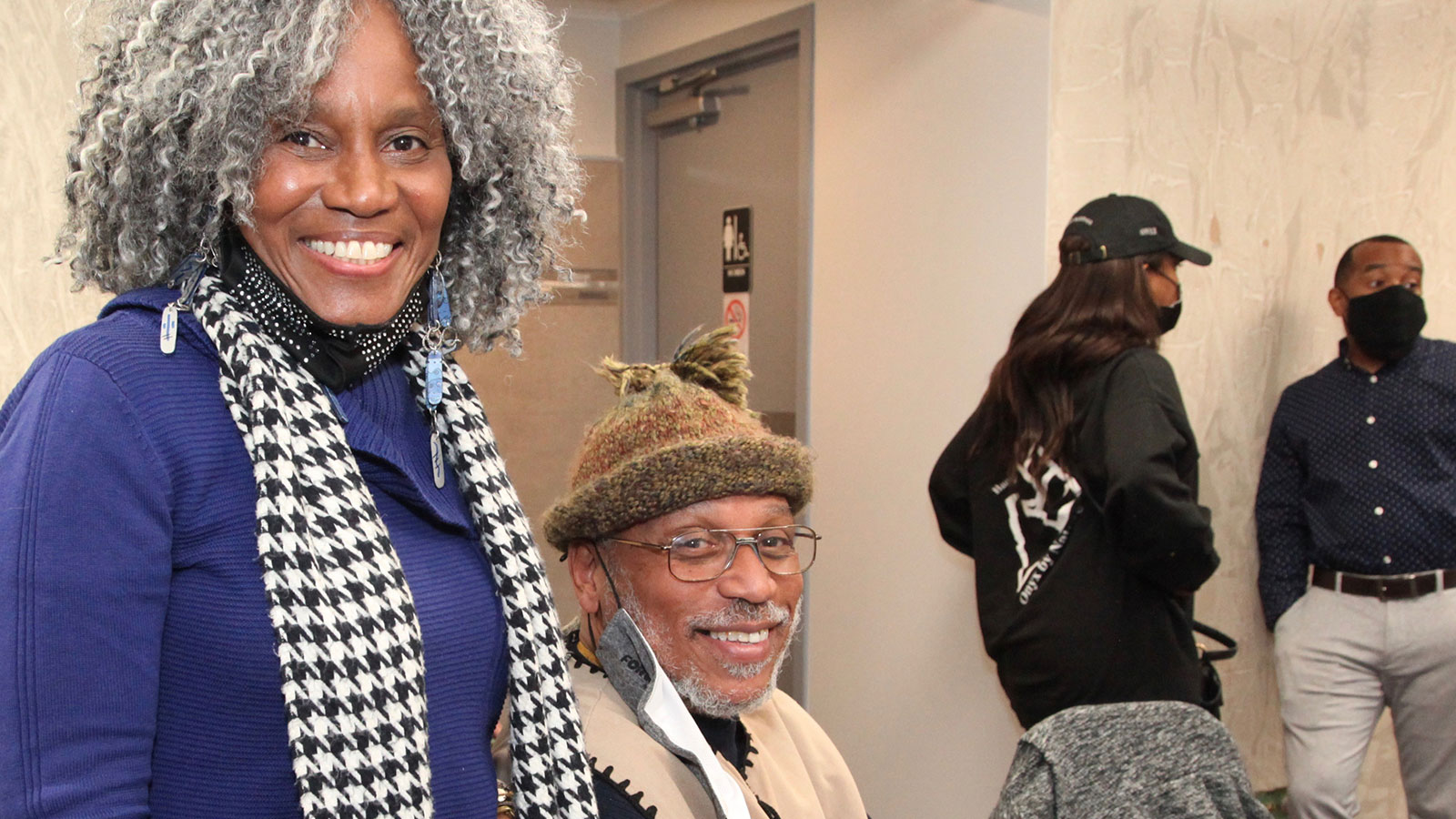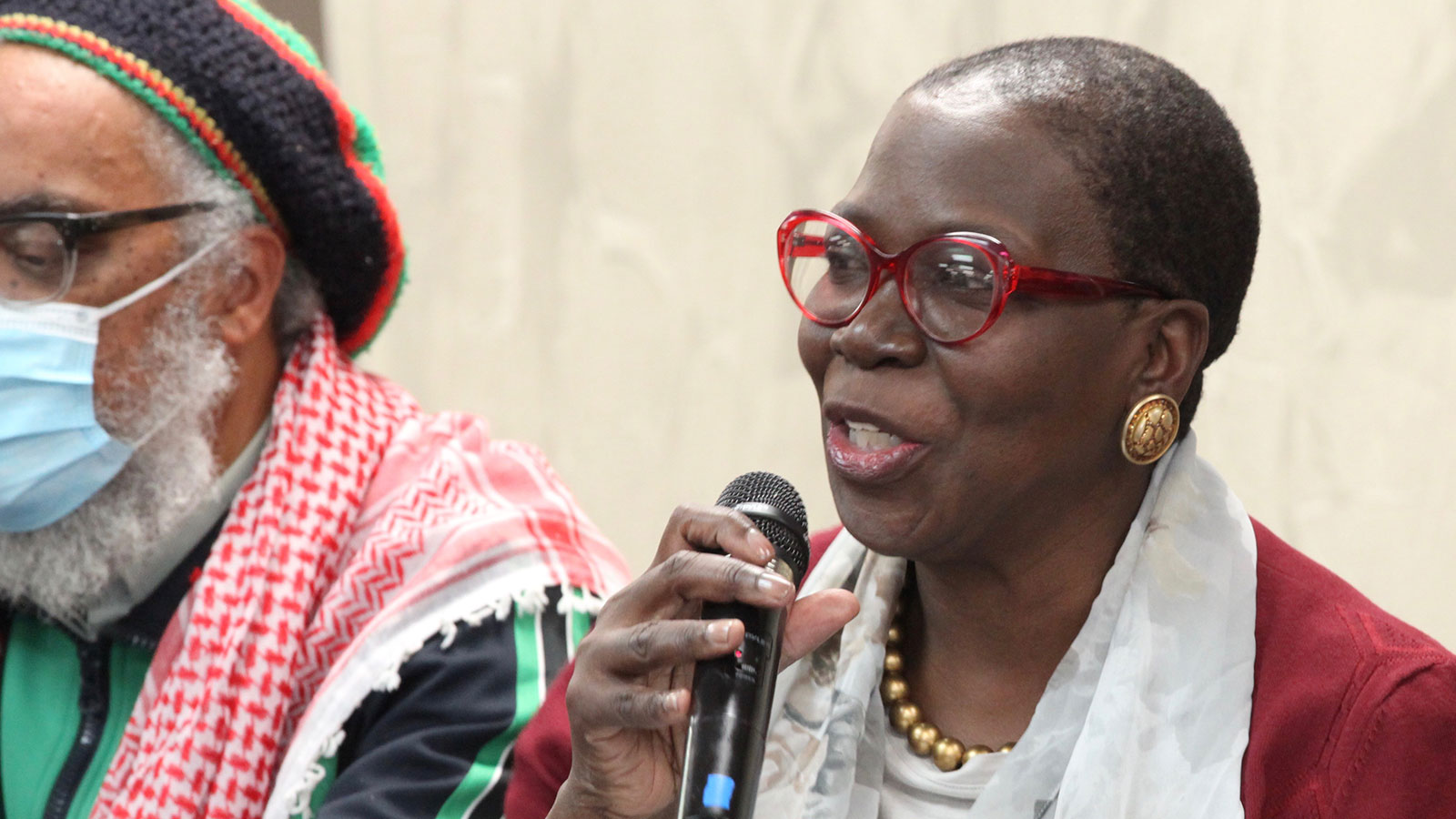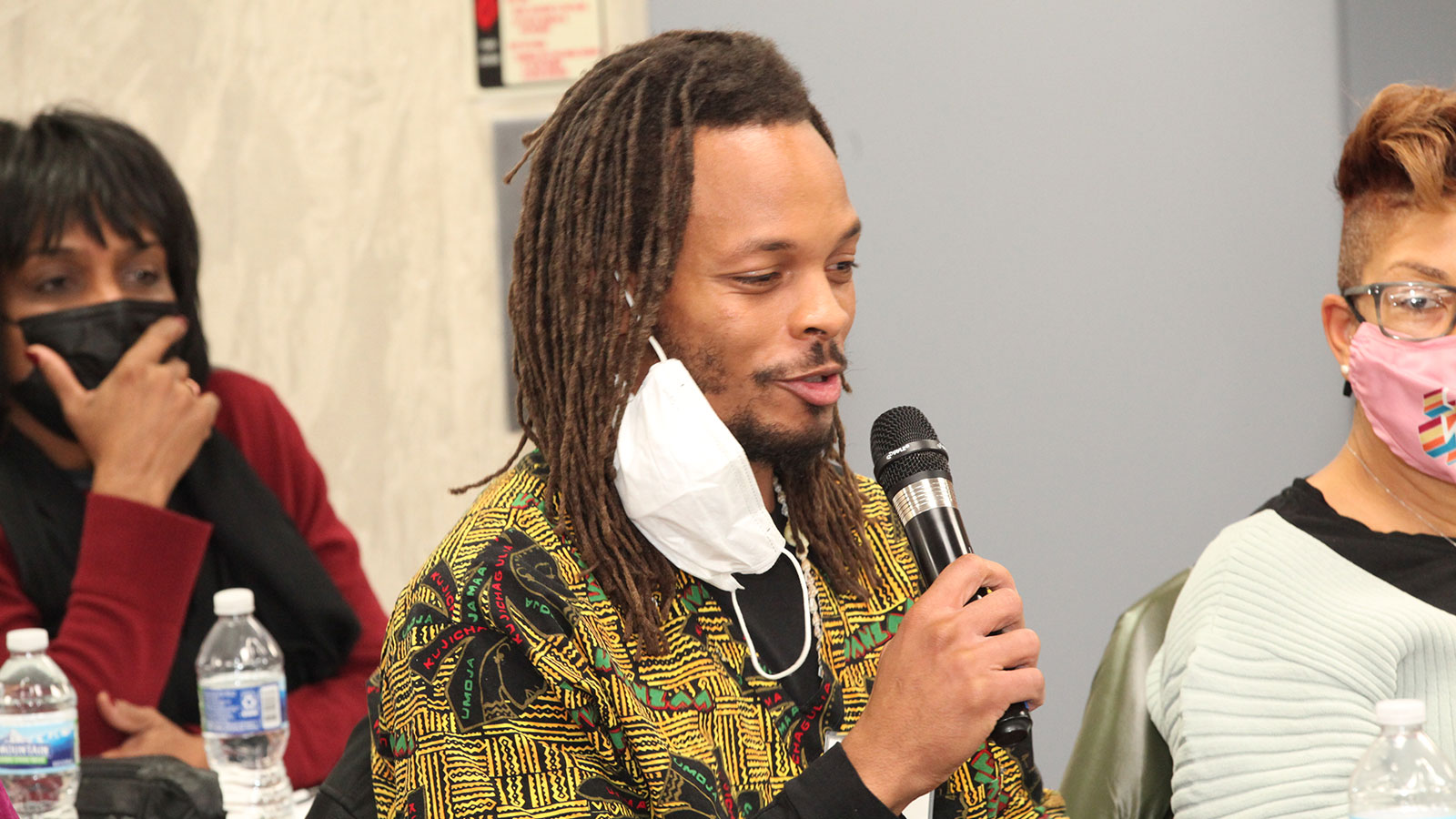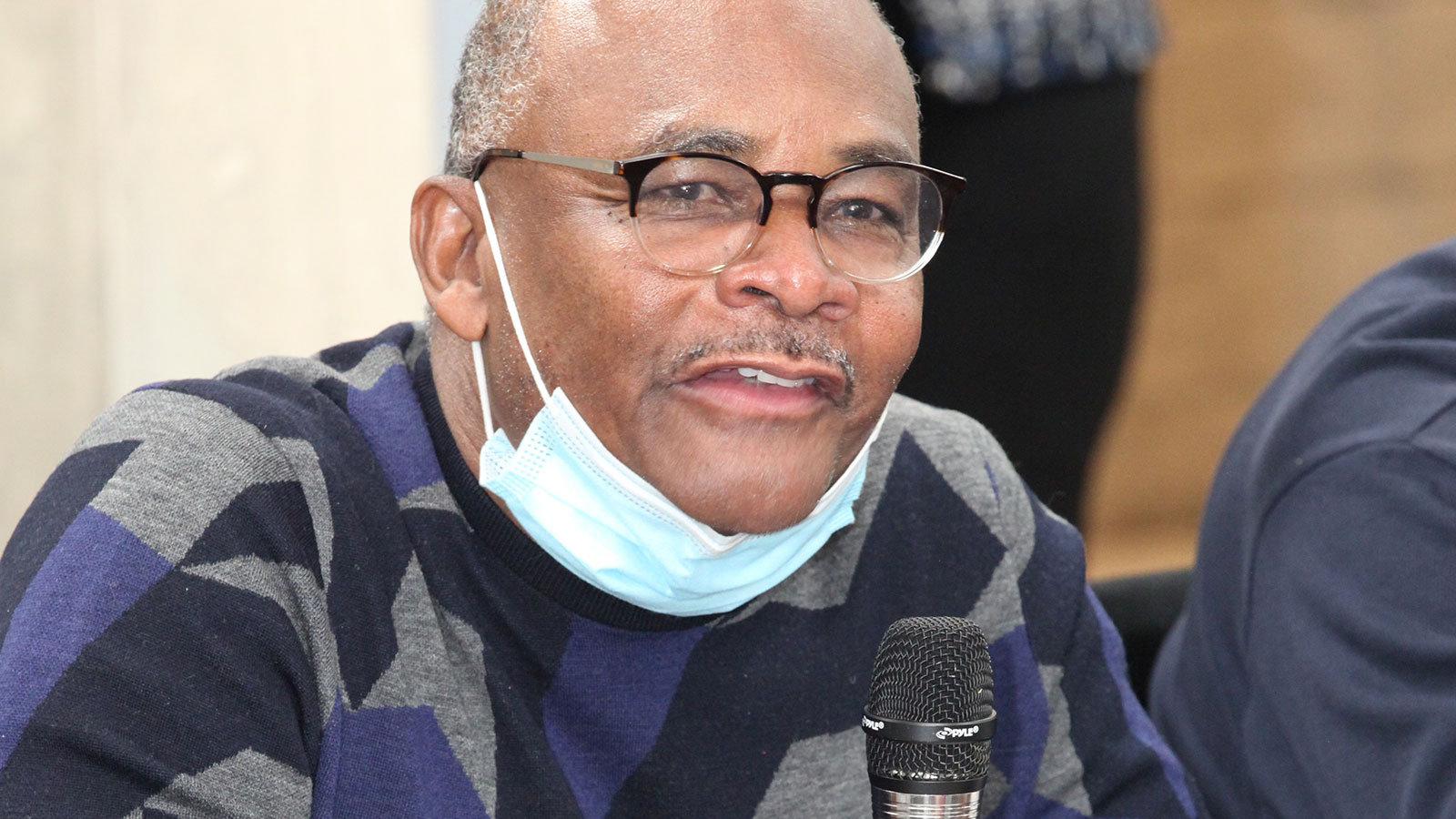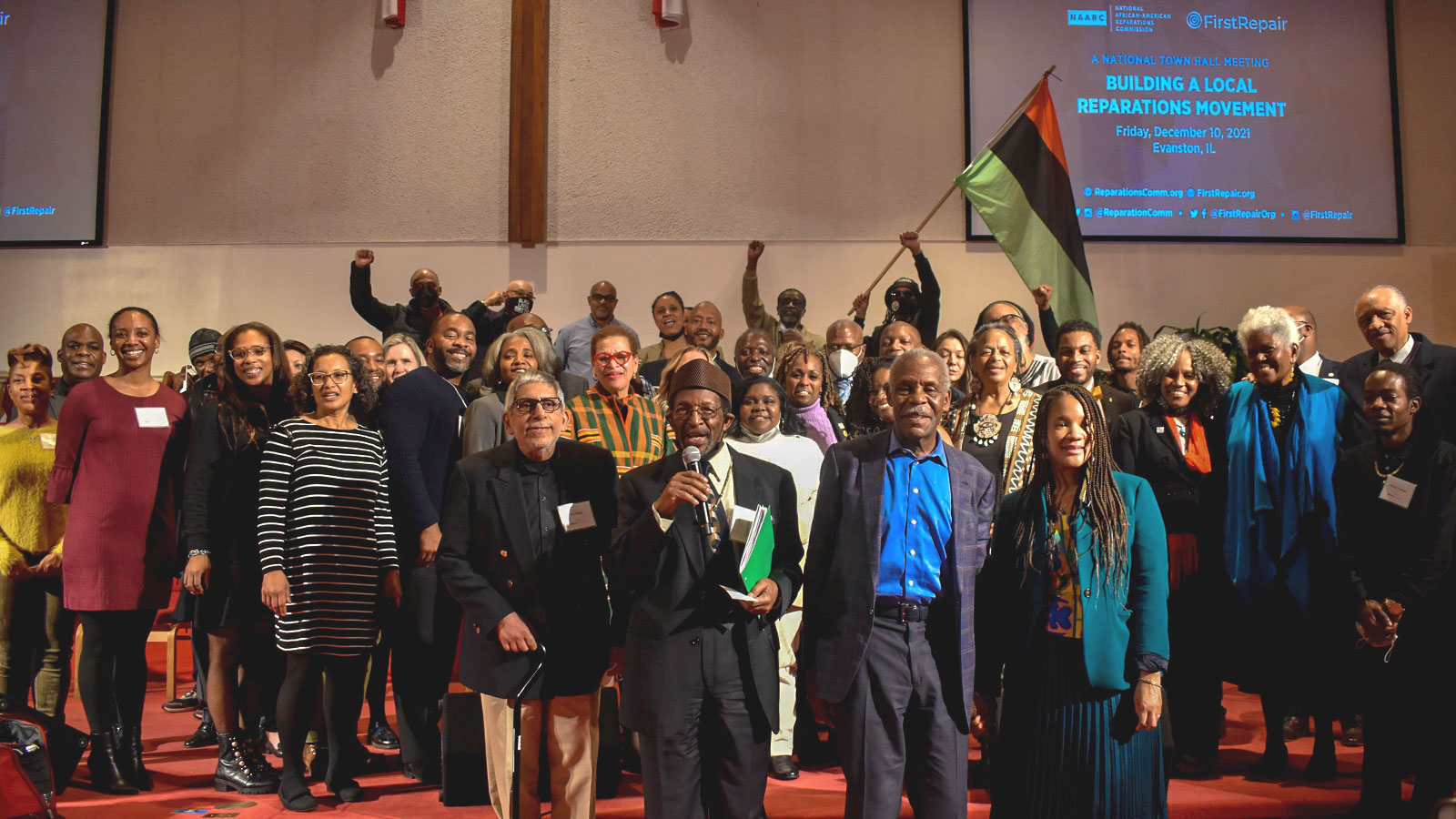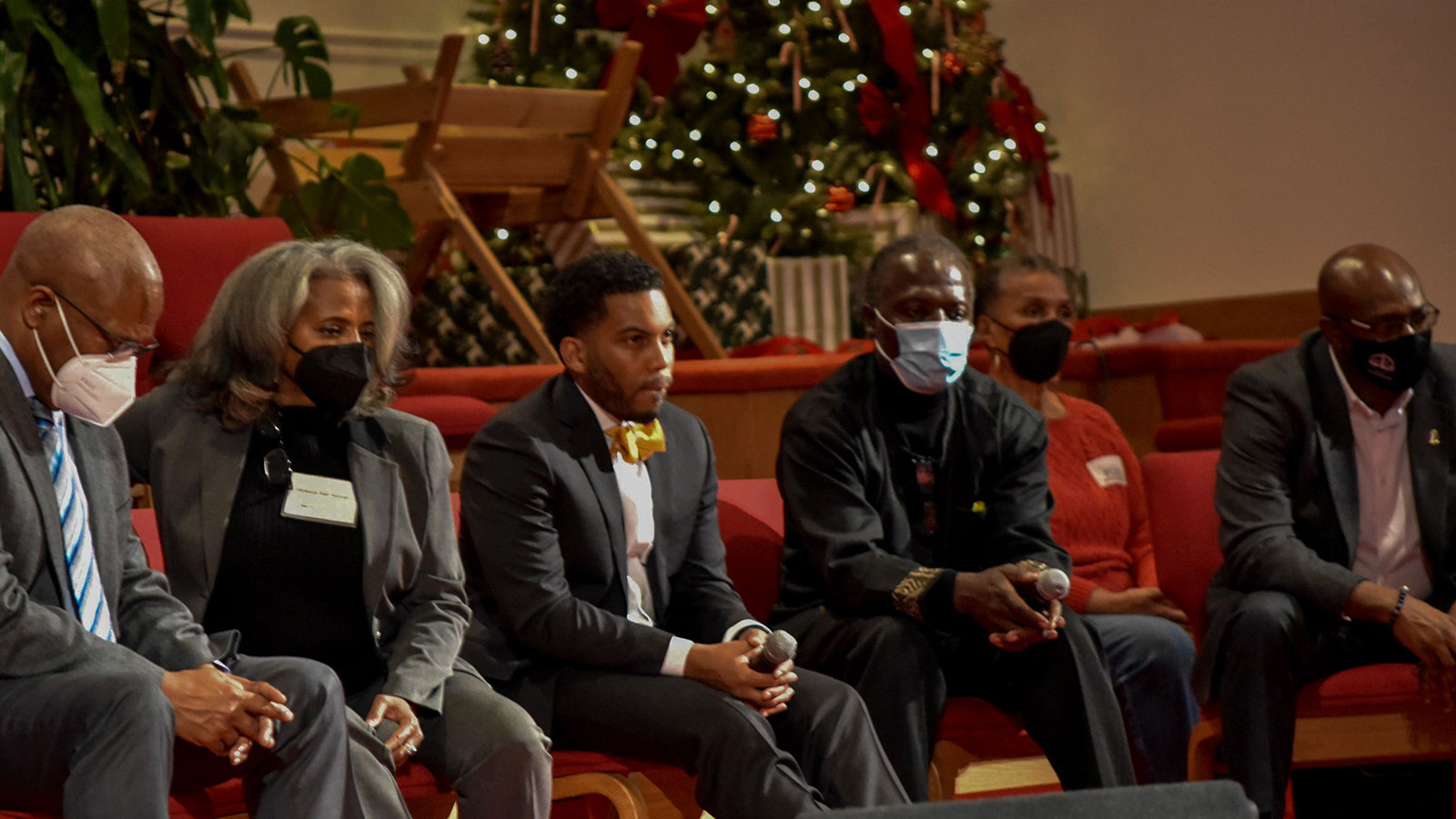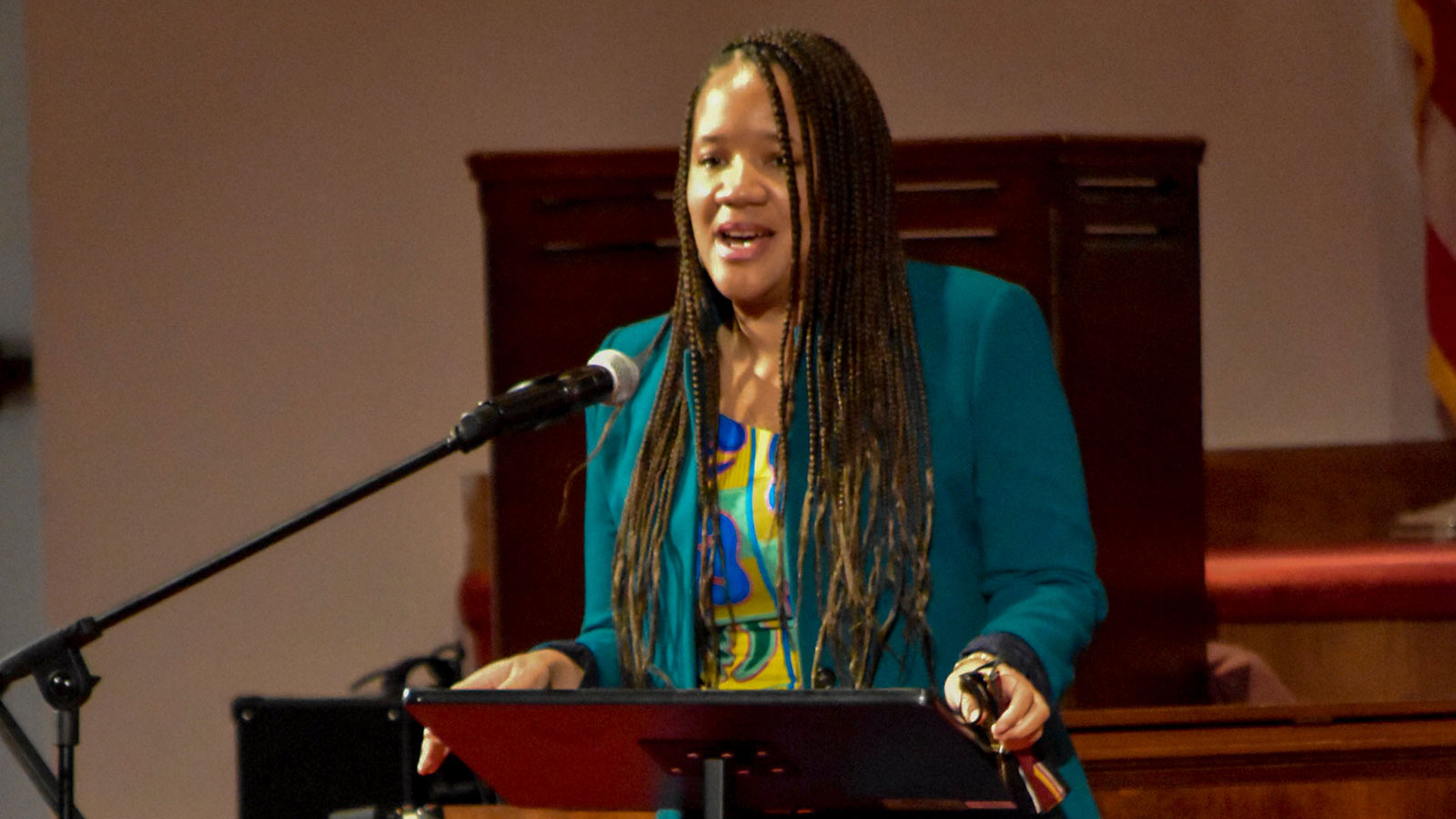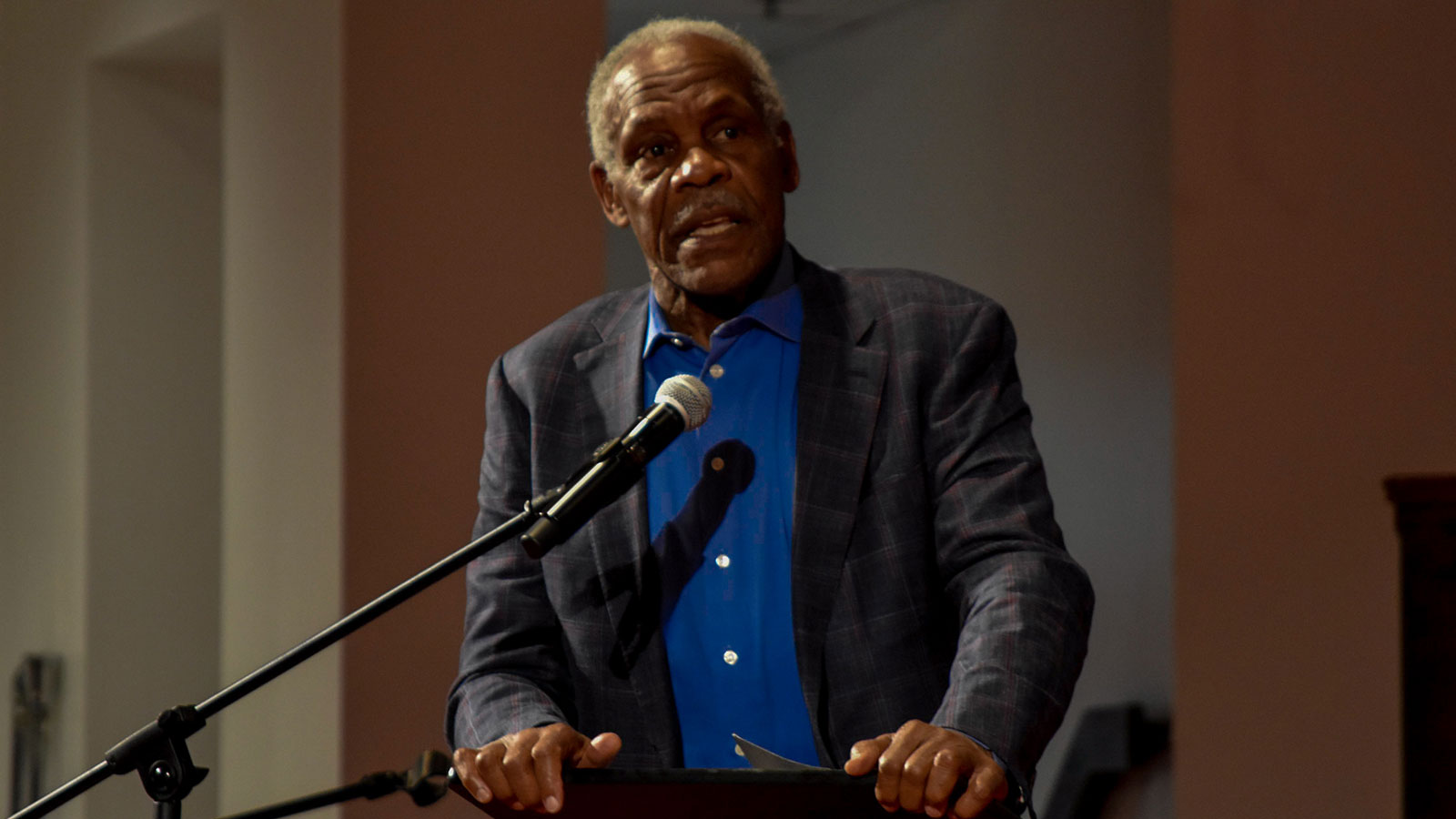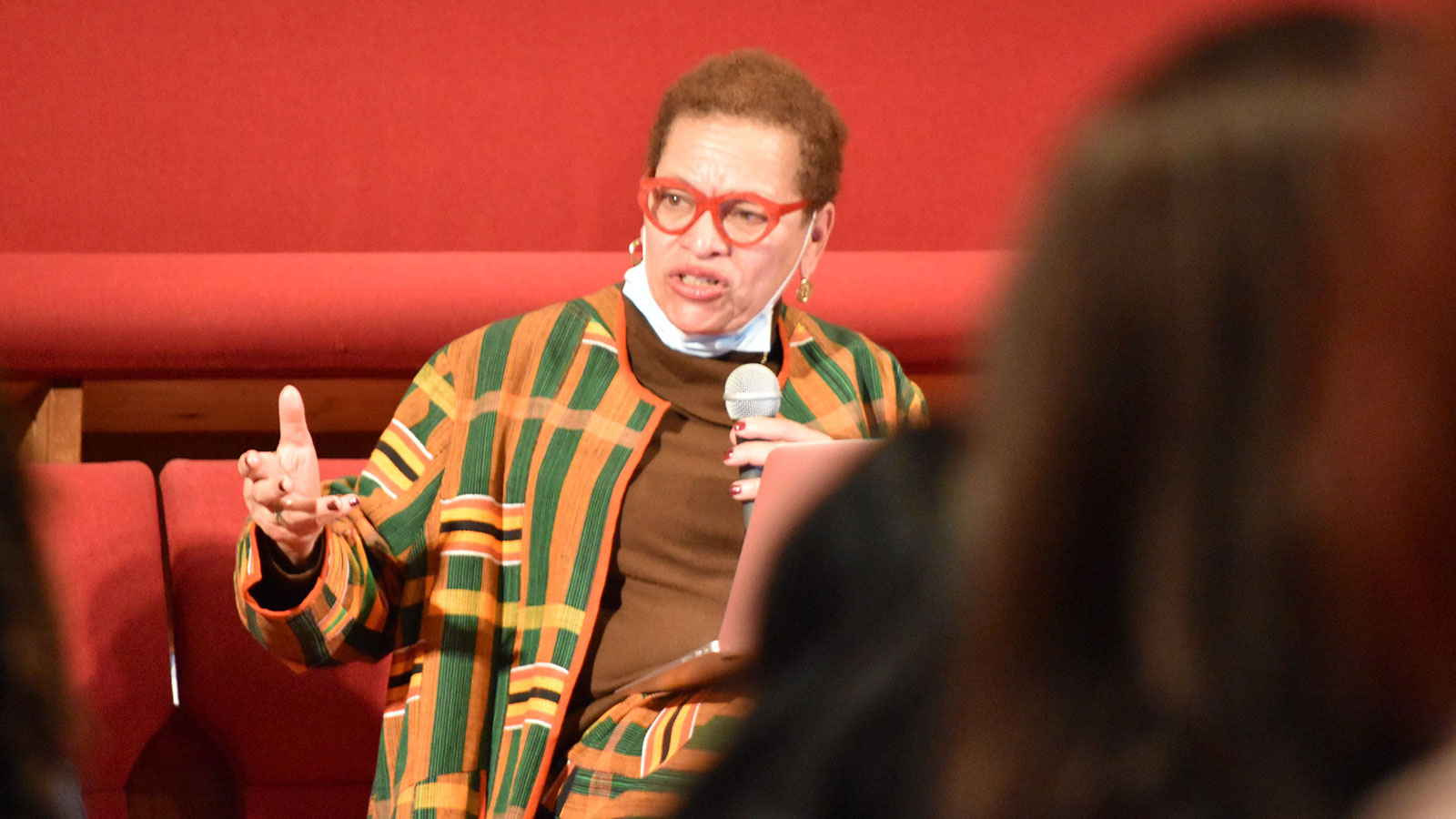Communique
December 9-11, 2021, at a moment of unprecedented national and international racial reckoning, scores of community-based stakeholders, advocates, elected officials and scholars converged on Evanston, IL for a National Symposium on Municipal and Local Reparations. Convened by the National African American Reparations Commission (NAARC) and Hosted by FirstRepair, these leaders journeyed to Evanston because of the conception and adoption of the first city-wide Municipal Reparatory Justice Initiative in this city. Building on the groundbreaking work of former Fifth Ward Alderman and Circuit Court Judge Lionel Jean-Baptiste, the courageous and visionary Alderman Robin Rue Simmons inspired her colleagues on City Council and the Mayor to adopt a resolution to allocate $10 million over 10 years to establish a Reparatory Justice Initiative.
After months of extensive engagement with Alderman Simmons, community stakeholders and elected officials, on April 19, 2020, NAARC Certified the Evanston Reparations Initiative as a flexible, adaptable model that could be replicated by municipalities around the nation. Evanston emerged as the epicenter, the source of inquiry, information and inspiration for civil rights/human rights and reparations advocates across the country seeking to interrogate the role of cities/municipalities in afflicting harm/injury on people of African descent. The collective work and collaboration of stakeholders and leaders in Evanston demonstrated that achieving reparations was/is possible. The Evanston Reparatory Justice Initiative is concrete, tangible, real.
When City Council allocated the first funding for the initial reparations program, the nation and world were watching and applauding. This dramatic act was further encouragement for local advocates to press ahead with plans to develop municipal reparation initiatives in every region of the U.S.
- December 2021 National Symposium on Municipal and Local Reparations (Photo by Yancey Hughes)
- December 2021 National Symposium on Municipal and Local Reparations (Photo by Yancey Hughes)
- December 2021 National Symposium on Municipal and Local Reparations (Photo by Yancey Hughes)
- December 2021 National Symposium on Municipal and Local Reparations (Photo by Yancey Hughes)
- December 2021 National Symposium on Municipal and Local Reparations (Photo by Yancey Hughes)
- December 2021 National Symposium on Municipal and Local Reparations (Photo by Yancey Hughes)
- December 2021 National Symposium on Municipal and Local Reparations (Photo by Yancey Hughes)
The Organizers of the Symposium conceived it as space and place for those engaged in developing municipal reparations initiatives and those interested in pursuing this objective to learn about the intricacies of the Evanston Initiative and to create an atmosphere where stakeholders, advocates, scholars and elected officials could share their experiences and learn from each other. Learning/sharing was intended to be the centerpiece of the Symposium process and experience. From the outset, the Organizers expressed the hope that the Participants would adopt two major goals:
- The establishment of a Local Reparations Resource Center to provide assistance to stakeholders and advocates building municipal and local reparatory justice initiatives in a structured learning/sharing environment.
- Encouraging Municipal and Local Reparatory Justice Initiatives and advocates to support HR-40, the bill designed to create a National Commission to Study and Develop Reparations Proposals for African Americans.
The learning/sharing process and experience began with an in-depth bus tour of Evanston’s historically redlined Black communities conducted by Dino Robinson, the amazing Founder and Executive Director of Shorefront Legacy Center. Throughout the tour and during the visit to the Center, Dino stressed the critical importance of preserving the history of Black families and communities and scrupulously documenting the harm or injuries to Black communities as a consequence of governmental policies and practices. Dino’s revelations about the harm to Black communities in Evanston as a result of his rigorous research had a noticeable impact on the Participants and was highly appreciated. The Tour helped to set the tone for the Working Sessions of the Symposium.
- December 2021 National Symposium on Municipal and Local Reparations
- December 2021 National Symposium on Municipal and Local Reparations (Photo by Yancey Hughes)
- December 2021 National Symposium on Municipal and Local Reparations (Photo by Yancey Hughes)
- December 2021 National Symposium on Municipal and Local Reparations (Photo by Yancey Hughes)
- December 2021 National Symposium on Municipal and Local Reparations (Photo by Yancey Hughes)
- December 2021 National Symposium on Municipal and Local Reparations (Photo by Yancey Hughes)
- December 2021 National Symposium on Municipal and Local Reparations (Photo by Yancey Hughes)
Convened in a warm and welcoming roundtable setting at Faith Temple Church, Rev. Carlis Moody Pastor, the Working Sessions, were characterized by the enthusiastic engagement of the Participants as they shared information about reparatory initiatives from their respective locales. The learning/sharing process was extraordinary as Participants made powerful presentations about their work, asked penetrating questions and received substantive responses from those gathered around the Table. While it is impossible to covey the highlights of all the presentations, the following are among some of the more salient observations and recommendations from the Working Sessions:
- Concurring with the observations made by Dino Robinson, Nick Cummings, Corporation Counsel City of Evanston, stressed the importance of documenting data/evidence of harm/injuries as reflected in various records in a municipality. This data is essential for crafting “narrowly tailored” reparatory justice initiatives to withstand expected legal challenges to remedies that are reserved for African Americans. In the current anti-affirmative action judicial climate, it is important to tailor reparations to address demonstrable harm/injuries. The Evanston Reparations Initiative was consciously drafted on the basis of indisputable data!
- It was suggested that the National Council of Black Studies might be a source of scholars/researchers willing to assist stakeholders to secure the data on harms/injuries to communities necessary to devise narrowly tailored reparations proposals. Local affiliates of the National Urban League may also have social-economic data that can be useful. Local and/or state Human Rights Commissions can also be helpful in gathering data. Human Rights Commissions carry a degree of credibility based on their mission.
- Linda Mann, Co-Founder, African American Redress Network, informed the Group that the Network is available to support local initiatives by providing legal assistance. Nick Cummings offered to do likewise. Public interest legal clinics at colleges and universities should also be viewed as a source of legal assistance.
- There was considerable agreement among lawyers and advocates at the Table that new legal theories must be developed to challenge the prevailing anti-affirmative action jurisprudence. New legal theories should incorporate human rights and international law. Atty. Nkechi Tafia strongly suggested that Genocide, as defined in international law, be incorporated into new legal theories and strategies. Based on these suggestions, NAARC will consider inviting lawyers and reparations advocates for a retreat to explore new legal theories and strategies to advance and defend reparatory justice initiatives.
- The Organizers emphasized the importance of community-based stakeholders driving and controlling municipal and local reparatory justice initiatives. This advice was eagerly embraced by several advocates who shared experiences of having to contend with top-down processes initiated by elected officials who appoint reparations task forces or launch initiatives without respectfully including reparations advocates from the community. NAARC and N’COBRA stressed that developing an inclusive stakeholder process and a reparations stakeholder organization flowing from that process is fundamental to creating an effective reparatory justice initiative.
- There was a concern that some of the mayors affiliated with Mayors Organized for Reparations and Equity (MORE) may not be connected with local reparations advocates and stakeholders in a manner that will be most beneficial in advancing reparatory justice initiatives. As an outcome of this discussion, NAARC will reach out to MORE in hopes of developing a collaborative relationship that will overcome the reservations/concerns expressed. Barry Burch, Senior Advisor for Federal Affairs and Government Relations, representing Denver Mayor Michael Hancock, volunteered to assist with the outreach.
- The importance of educating the community about reparations was raised by some advocates who observed that there are many Black people who do not really understand the definition, purpose, history of reparations, including groups who have successfully fought to win reparations, e.g., Japanese Americans via the Civil Liberties Act of 1988. Educating the community will create a strong base of support for reparatory justice initiatives. Robin Rue Simmons shared examples of the town hall meetings and forums that were convened as part of the process of moving the Evanston Initiative forward. She suggested that ongoing education was vital to building and sustaining community support for reparations initiatives.
- Participants noted that educating and advocating for reparations was also part of self-repair of the damages endured across generations of harm/injury and trauma that affect/impact our people today. Kamm Howard took the opportunity to cite the recently released Study – The Harm Is to Our Genes: Transgenerational Epigenetic Inheritance and Systemic Racism in America. This landmark study provides evidence of the continuing harm which people of African descent experience today. This evidence can and should be used in making the case for reparations via legislative initiatives at the local, state and federal levels as well as in lawsuits.
- There was considerable discussion about the need for Black-controlled financial structures to receive reparations resources. Consistent with NAARC’s certification criteria, reparatory justice initiatives should include the equivalent of a Reparations Finance Authority as recommended in the NAARC 10 Point Reparations Program. This independent Fund should be controlled by representatives from the Black community. The Fund can receive public/government funds as well as funds from the private sector, e.g., individuals, families, corporations, financial institutions, colleges and universities, etc. These Funds can augment/complement reparations awards granted by municipal governments as well as utilize private funds to redress harms inflicted by non-governmental bodies.
- The Evanston Reparatory Justice Model includes a community-based stakeholder organization and Reparations Finance Authority. The Fund is being incubated by the Evanston Community Foundation, which is serving as the Fiscal Sponsor for the Fund until the Fund receives IRS non-profit, tax-exempt status. The Organizers encourage reparations advocates/stakeholders to reach out to their local community foundation to explore a similar arrangement. Sol Anderson, President/CEO, Evanston Community Foundation agreed to assist advocates and stakeholders to create local Reparations Finance Authorities.
- The Basic Elements for Municipal Reparations Initiatives which NAARC developed to certify municipal reparations initiatives was also presented and discussed during the Working Sessions. Participants generally found them to be useful for advancing their efforts. (See document here)
- December 2021 National Symposium on Municipal and Local Reparations (Photo by Yancey Hughes)
- December 2021 National Symposium on Municipal and Local Reparations (Photo by Yancey Hughes)
- December 2021 National Symposium on Municipal and Local Reparations (Photo by Yancey Hughes)
- December 2021 National Symposium on Municipal and Local Reparations (Photo by Yancey Hughes)
- December 2021 National Symposium on Municipal and Local Reparations (Photo by Yancey Hughes)
- December 2021 National Symposium on Municipal and Local Reparations (Photo by Yancey Hughes)
- December 2021 National Symposium on Municipal and Local Reparations (Photo by Yancey Hughes)
The National/International Town Hall Meeting held at First Church of God Christian Life Center, Monte L. G. Dillard, Pastor, was a major highlight of the Symposium. It was designed to be the space for residents of Evanston to interact with the Participants from around the country. It was also livestreamed so that interested persons around the world could share in the experience of witnessing the evolution of a powerful municipal and local reparations movement inspired by the Evanston reparatory justice initiative. Convened on Human Rights Day, it seemed providential that NAARC and First Repair would call people to assemble at the very church where hundreds gathered during the same week two years earlier for a spirit-filled Town Hall Meeting that galvanized support for the milestone Evanston Reparations Initiative.
Concerns and caution regarding COVID-19 and a cold, rainy, windy evening had a chilling effect on turn-out, but it did not put a damper on the enthusiasm of the audience and the guests from around the nation. The Town Hall Meeting was a gathering of major significance at a crucial moment in history that was viewed by thousands from around the nation and the world. Danny Glover, Actor, Activist and U.N. Ambassador for the Decade of African Descent, who was a Special Guest at the 2019 Town Hall Meeting, was moved to return to offer his support. Congresswoman Sheila Jackson Lee, the indomitable Lead Sponsor on HR-40, joined the gathering virtually.
Eric Philips, Vice-Chairman of the CARICOM Reparations Commission, who traveled to Evanston from Guyana in South America, hailed the Evanston Symposium as a potentially historic gathering. Rev. Dr. Michael Nabors, Senior Pastor, the historic Baptist Church and President of the Northshore Branch of NAACP, captured the essence of the moment by reciting Yet Do I Marvel by the Harlem Renaissance Poet Countee Cullen. Evanston attendees erupted with a rousing ovation as the reparation advocates/leaders from around the nation were introduced by the dynamic Moderator, NAARC Commissioner Atty, Nkechi Taifa.
A stellar Panel offered information, insights and experiences with developing municipal and local reparatory justice initiatives. The audience chimed in with questions about various aspects of their own Evanston reparations initiative. Peter Braithwaite, Chairman of the Evanston City Council Reparations Sub-Committee, shared some of the day-to-day challenges of operationalizing the Initiative. He expressed great optimism about the response and support of the community. Danny Glover took to the stage to salute the courageous work of Robin Rue Simmons, the community stakeholders and the relentless work of N’COBRA and NAARC in supporting the Evanston Reparations Initiative. Danny shared reflections on the struggle for justice by his grandmother Reccee Mae Huntley and suggested she is looking down from on high with pride on the progress of the reparations movement as evidenced by the Evanston Symposium.
When Congresswoman Sheila Jackson Lee joined the Town Hall Meeting virtually, she delivered an oratorical treatise on the centuries of harm/injuries that cry out for reparatory justice. She cited the Tulsa massacre and destruction of Black Wall Street as a wound that is deeply felt by Black America. These longstanding injuries demand repair. The passage of HR-40 will begin the process. The Congresswoman appealed to leaders of municipal/local reparations initiatives to mobilize in support for HR-40. With the audience fired up, Dr. Ron Daniels, Convener of NAARC, called on Dr. Karen Wilson – Amar’ Echefu, representing the Bethesda Cemetery Coalition, to close the Town Hall Meeting with a tribute to John Lewis with a vibrant participatory rendition of “Make Good Trouble.”
The Town Hall Meeting was a fitting prelude to the concluding Working Session of the Symposium, which featured presentations on the practical aspects of launching a municipal/local reparations initiative. Robin Rue Simmons assembled an outstanding Panel of stakeholders and partners from the Evanston Initiative to share their experiences and recommendations with the Participants. It was very effective. The presentations were illustrative of the comprehensive tool kit on municipal reparations Robin has developed to be used by First Repair to provide support for municipal reparations initiatives around the country. Kamm Howard referenced documents which could be useful educational materials for reparations advocates (see attached list) and reiterated N’COBRA’s commitment to be of assistance.
- December 2021 National Town Hall Meeting “Building a Local Reparations Movement”. First Church of God CLC, Evanston, IL. (Photo by Londyn Simone)
- December 2021 National Town Hall Meeting “Building a Local Reparations Movement”. First Church of God CLC, Evanston, IL. (Photo by Londyn Simone)
- December 2021 National Town Hall Meeting “Building a Local Reparations Movement”. First Church of God CLC, Evanston, IL. (Photo by Londyn Simone)
- December 2021 National Town Hall Meeting “Building a Local Reparations Movement”. First Church of God CLC, Evanston, IL. (Photo by Londyn Simone)
- December 2021 National Town Hall Meeting “Building a Local Reparations Movement”. First Church of God CLC, Evanston, IL. (Photo by Londyn Simone)
- December 2021 National Town Hall Meeting “Building a Local Reparations Movement”. First Church of God CLC, Evanston, IL. (Photo by Londyn Simone)
- December 2021 National Town Hall Meeting “Building a Local Reparations Movement”. First Church of God CLC, Evanston, IL. (Photo by Londyn Simone)
Closing out the momentous Symposium, Dr. Ron Daniels briefly explained the NAARC Municipal Reparations Initiative Certification process and requirements. NAARC is ready and willing to assist local communities to launch reparations initiatives and/or certify them upon request. He noted that the major goals of the Symposium were re-stated throughout the Symposium. A consensus emerged from the discussions in support of the establishment of a Local Reparations Resource Center; and encouraging municipal and local reparatory justice initiatives and advocates to mobilize/organize in support HR-40. In response to Dr. Daniels’ call for a resolution, the goals were adopted by acclamation by the Participants with the suggestion that the Resource Center should be located in Evanston under the auspices of First Repair. The session ended with a celebratory Chant of Harambee (let’s all pull together) by the Participants.
Thus concluded the Evanston Municipal Reparations Symposium. As Eric Philips had suggested in the Opening Session, the Participants made history. It was the first time ever that community-based stakeholders, advocates, elected officials and scholars had come together to launch a movement that has the potential of cleansing one of America’s original sins by repairing injury/harm to Black communities across the nation!
Immediately after the historic Evanston Symposium, in her weekly syndicated column, Dr. Julianne Malveaux paid tribute to the humble, brilliant warrior woman most responsible for the milestone Evanston Reparations Initiative that has become an inspiration to the world. The title of her column is Reparations Risings with Robin Rue Simmons!
Watch Video: Danny Glover
Streamed live on Friday, December 10, 2021 from the First Church of God CLC in Evanston, IL — See full video below
Watch Video: Dr. Ron Daniels
Streamed live on Friday, December 10, 2021 from the First Church of God CLC in Evanston, IL — See full video below
Watch Full Video
Streamed live on Friday, December 10, 2021 from the First Church of God CLC in Evanston, IL

